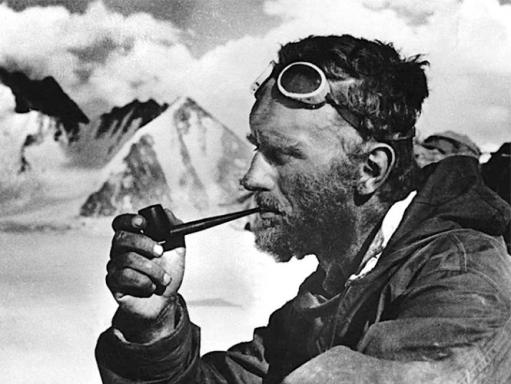Progress at 25 metres an hour, at best 1.5 km a day. Seven days to cover 10 km as the crow flies. The only food was bamboo shoots and bland mushrooms. Added to this drastic diet is the constant fear of running into an aggressive bear. Anxiety is the order of the day for all five team members. A bad reality TV scenario? No, just the misadventure of a "so British" gentleman, Eric Shipton, and his almost inseparable rope-mate, William Tilman. Saved, however, according to the two Western protagonists, by the knowledge of the natural environment of their companions in misfortune: three indefatigable Sherpas. Without them, this Himalayan odyssey could have come to a dramatic end. This journey through the Garhwal mountains (Indian Himalayas) sets the tone for the life of one of the most remarkable explorers of the first half of the 20th century. A look back at the life of Eric Shipton, unjustly ignored by publishers in France.
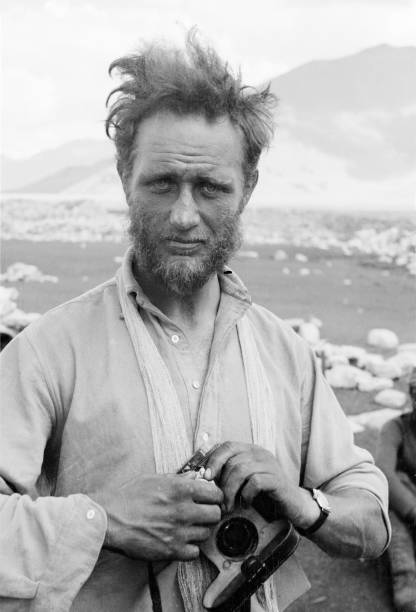
Eric Shipton © International Watch League
A vagabond childhood
Eric Earle Shipton was born on 1 August 1907 in Kandy, in the heart of the magnificent tea plantations of Ceylon (Sri Lanka), then a renowned British colony. A wealthy colonial father, an elegant mother and a protective older sister: young Eric's future could have been a straight line. But life decided otherwise. His father died when he was just three years old. His mother remarried and, far from having a settled life, led the blended family on a never-ending round of travels between London, South India, Ceylon and France. Shipton will always remember this period as a time of restlessness: "It's a virulent tarantula, this desire to see what's around the bend".
The Pyrenees are not the Andes, but almost
School life and a rigid British upbringing proved a trial for a child who was (already) dreaming of the great outdoors. At the age of 15 (1922), he discovered the Pyrenees during a holiday in Gavarnie with his mother and stepfather. An avid reader of Edouard Whymper, he found in the Pyrenees emotions and landscapes similar to those described in his famous book Voyages dans les grandes Andes de l'Equateur.
When he was 17 (1924), he had his first experience away from home. A Norwegian, Gustav Sommerfelt, a classmate at school, took him to discover the Jotunheim mountains. In December of the same year, on a family holiday in Adelboden (Central Switzerland), he took his first steps in mountaineering with a guide from the Oberland. On the slopes of Gross Lohner (3,048 m), a modest winter summit, he was introduced to the joys of altitude. His vocation was born.
The following summer, on his 18th birthday, he embarked on his first real season of mountain racing. Monte Disgrazia (3,678 m), in Italy, in the Bernina massif, with a guide. A favourite peak for the British at the time, it was first climbed in 1862 by two citizens of the Empire and their Swiss guides. He then set off on a three-week solo trek along the Stevenson route in the Auvergne (despite his family's reluctance to see him go it alone). A series of climbs in the Dauphiné Alps, in the company of a young guide from La Bérarde, Elie Richard, rounded off this fine season. More than pure technique, the discovery of new landscapes and valleys delighted the budding explorer.
 La Bérarde around 1930
La Bérarde around 1930
Mountaineering without a guide
There followed four years of wandering the Alps, first with a guide, then without one. This was unusual for a boy of barely 20 at the time. George Peaker, a maths teacher and climbing enthusiast, introduced him to this discipline in the Lake District (north-west England). With him, he made some of his finest ascents in the Alps: the west ridge of the Dent blanche and then the traverse of the Matterhorn (ascent via the delicate Zmutt ridge, descent via the Italian side).
Once a planter, always a mountaineer
At the age of 20 (1927), when he was accepted to study geology at Cambridge, he discovered that his professors had no idea of the professional possibilities of such studies. Discouraged by the idea of becoming a teacher, he dropped out of university in 1928 and left for Kenya. He became a coffee planter. History will record their exceptional (for the time) first crossing of the twin peaks of Mount Kenya (Batian and Nelion), masterfully led by Shipton in 1930.
Kamet: 1931, the year of consecration
This brilliant achievement put the brilliant young climber in the spotlight. As a result, he was selected by Franck Smythe, a renowned mountaineer, for his first Himalayan experience: Kamet (7,756 m). The second highest peak in the Garhwal, after Nanda Devi. A dozen attempts failed to bring the mountain to its summit. Not only did Smythe and Shipton reach the summit (21 June 1931), they also achieved eight other firsts in the upper Arwa valley, north of Badrinath. This brilliant victory established Shipton's reputation. He was just 24 years old.
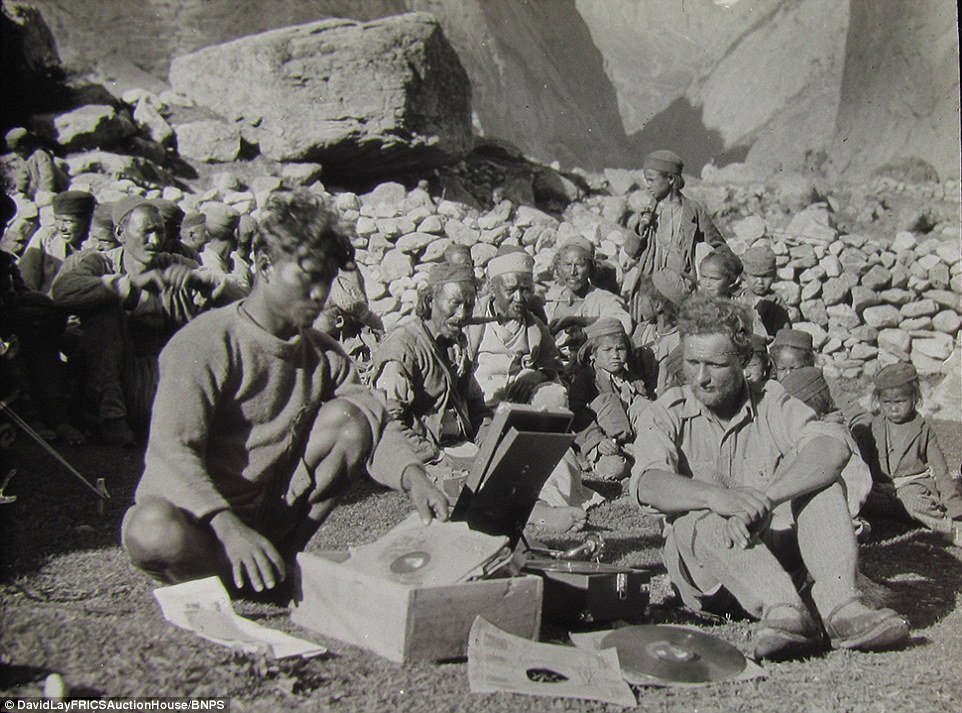
Kamet with all the comforts of home: a gramophone for listening to your favourite music © DavidLayFRICSAuctionHouse/BNPS
1932 saw him climb the Ruwenzori mountains in Africa with Tilman. They planned to go back together to the Nanda Devi. But Shipton's fame upset their plans.
1933: full-time explorer
Hugh Ruttleledge, leader of the 1933 British Everest Expedition, selected Shipton to take part in the ascent. At the age of 26, Shipton had a decisive experience: on returning from their attempt on the roof of the world, disappointed by the cumbersome organisation, but enthused by the discovery of Tibet and Sikkim, he planned to devote his life to travelling the mountains for his own pleasure, with a budget reduced to the strict minimum. His philosophy can be summed up as follows: the chances of success are inversely proportional to the means deployed. So he lived like the natives, travelling by third-class train and eating tsampa (barley flour) with every meal. Contrary to the colonial spirit of the time, he held the Sherpas in high regard, as they were indispensable companions on all his Himalayan adventures. To earn a living, he did not hesitate to become a lecturer: "an unpleasant chore", he would say of this occupation.
This philosophy of frugality is also that of William Tilman. Tilman, who had come from Kenya to spend a few days' holiday in England, had no hesitation in following Shipton on a five-month campaign in the Garhwal Himalayas, the most alpine of the Himalayan massifs. The aim: to find access to the unspoilt Nanda Devi Sanctuary (7,816 m), the highest peak in the British Empire.
1934: Epic in the Garhwal mountains
Shipton was now 27 years old. They left Liverpool on 6 April 1934 on the HS Mashoud, an old cargo ship offering them a low-cost thirty-day crossing to Calcutta.
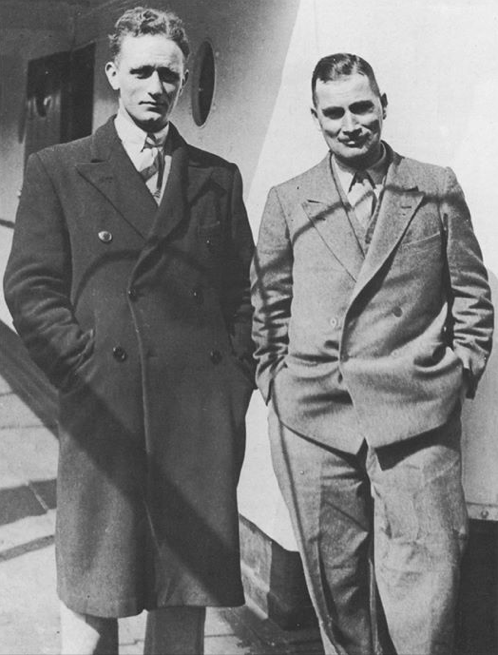
Shipton and Tilman on board the SS Mashud in Liverpool
On arrival, they met the three Sherpas who had been selected in advance: Kusang, Pasang and Ang Tarkay. Ang Tarkay was to become an unfailing friend. Thirty-six hours by train across the Indian plains, under a scorching sun. Shipton was dying of thirst, but Tilman, a wise and strict accountant, refused to buy him a glass of tea. He had to wait for the first few days of walking in the pre-Himalayan hills before he could drink his fill.
We have already described the approach to the Sanctuary via the Rishi Ganga gorge, from 21 May to 2 July 1934. But the highlight of the trip was the least-known part of their exploration.
During the summer, they decided to take their three Sherpas on an improbable east-west crossing of the Garhwal range. Their aim was to be the first to cross the basins of the three main rivers that feed the Ganges: Bhagirati, Mandakini and Alaknanda. All three have Hindu shrines: Badrinath to the east, Gangotri to the west and Kedarnath to the south. It's July, the monsoon is in full swing, the mountains are hiding behind the clouds, the lower valleys are getting torrential rain and the glaciers are getting heavy snowfalls. No matter. They crossed several glacier passes that are still rarely visited tod
Leaving Badrinath in mid-July, by the 27th they were at the source of the Ganges, at Gaumukh at the foot of the majestic Shivling, near Gangotri.
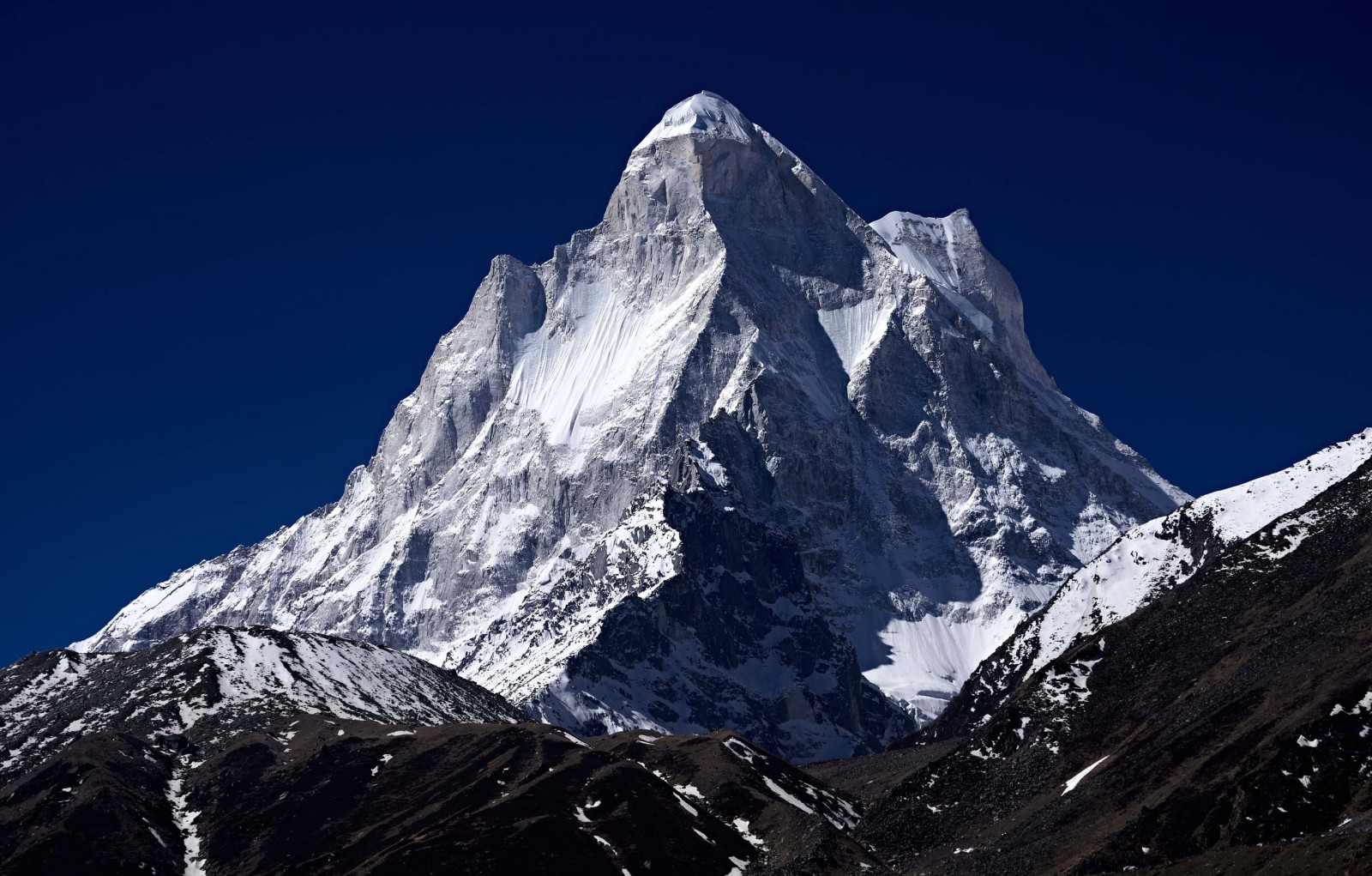
The elegant Shivling, the Matterhorn of the Himalayas © UKC
Now they have to get to Kedarnath, which is as far away, proportionately, as the hamlet of Ailefroide is from that of La Bérarde. At the end of the Satopanth glacier, the imposing Chaukhamba massif (7,138 m) towers above them. Local legend has it that there may be a way across, via a forgotten pass, to the southern slope where Kedarnath is located.
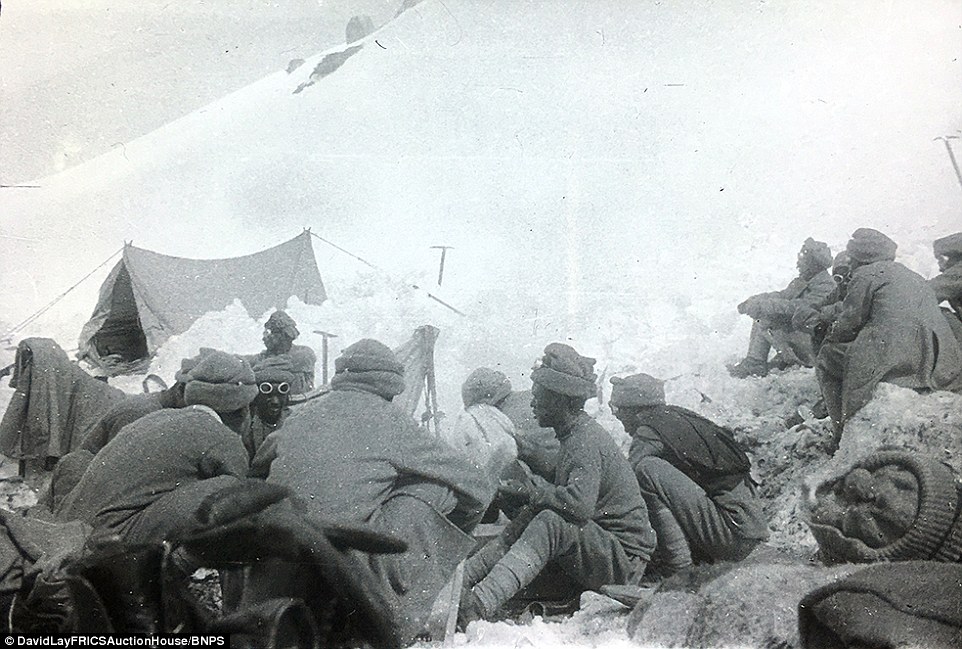
Sherpas in an altitude camp towards 1930 © DavidLayFRICSAuctionHouse/BNPS
From 11 to 17 August, an incredible and perilous descent from the pass began. In places, the loads had to be lowered by rope; the five men de-escalated when they could, or set up improbable abseils on juniper roots. The major obstacle was a rocky bar almost three hundred metres high. They finally reach the forest, but to discover that there is no path in the dense jungle. They made their way up steep slopes. They must cling to the roots so as not to be precipitated to the bottom of the gorge. At times, they made progress of just 25 metres in an hour, and were happy to have covered 1.5 kilometres in a day. After four days, they ran out of food. Thanks to the Sherpas, they found some meagre expedients: bamboo shoots and mushrooms. Finally, they emerged from the forest and saw a hamlet of four houses. Tilman, still phlegmatic: "We'll be there in time for tea".
Sunderdhunga pass: the one-way crossing
Any mountaineer would have thrown in the towel after such an adventure. But they didn't. Barely recovered from their emotions, they returned to the Sanctuary in the autumn. This time, they hope to find a route to climb Nanda Devi, the "joyful goddess". Tilman regularly suffers from altitude sickness above 6,000 metres. On 12 September, Ang Tarkay, Kusang and Shipton made the first ascent of Maiktoli (6,803 m), a magnificent viewpoint offering a panoramic view of the southern ridge of the goddess. They were jubilant: the ascent route, the key to success, was laid out before their eyes. But it was getting late and mid-September had arrived. The long return journey through the Rishi Ganga gorges, if it snows, could become a nightmare. They decided to cross the Sunderdhunga pass, the south face of which Shipton had seen from the Maiktoli. Once again, the route demanded a lot of them. Two days of another tricky descent awaited them. The glacier drops a steep 1,800 metres. An abseil on a mushroom of ice cut off any retreat. Once again, the inescapable Tarkay found the key passage leading to the glacial moraine and put an end to this extraordinary five-month epic.
A few weeks later, at the beginning of November, Shipton left for England on an old cargo ship. Six weeks from Colombo to Liverpool. During the crossing, he wrote his first book, Nanda Devi (never translated), considered by his biographers to be the best of his many works.
28 to 44: the golden years (1935 - 1951)
This was the beginning of a long period of glory. He climbed Everest three times (1935, 1936 and 1938), followed by several years of complete exploration of the Karakoram (1939 to 1948). He covered the Aghil and Shimshal passes, then the Biafo and Hispar glaciers. Today, all these routes can be used for large-scale trekking. During the war, the government, and probably British intelligence, appointed him consul general for Kashgar. An ideal place to continue exploring the neighbouring Karakoram and the peaks around the capital of Xinjiang.
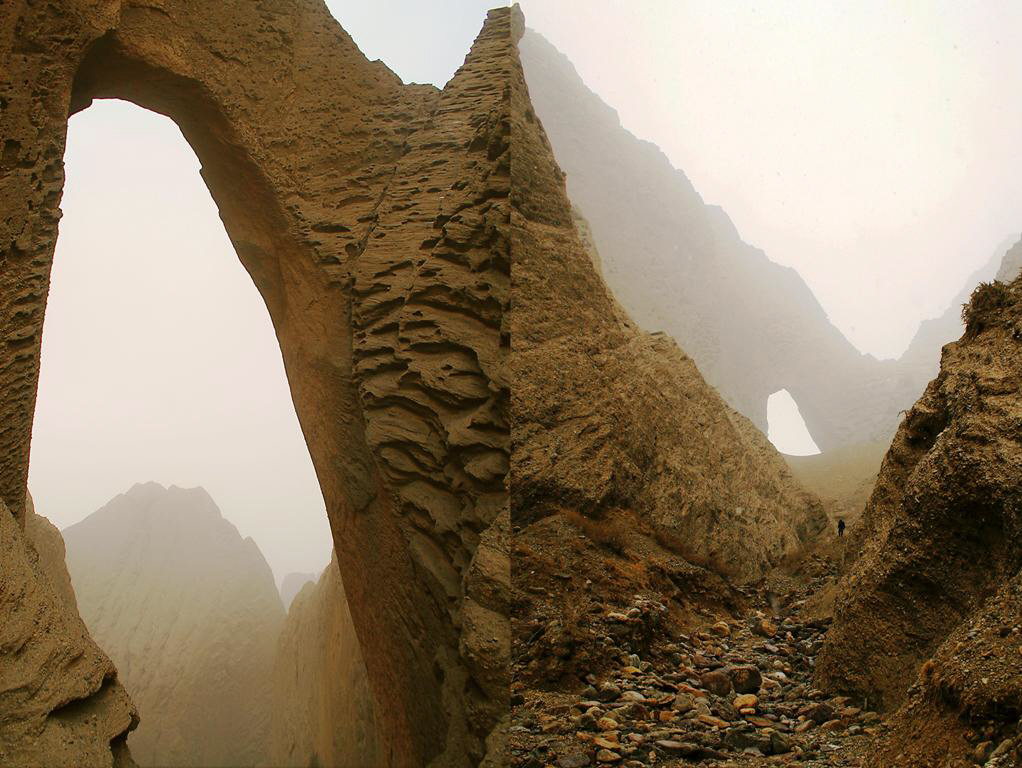
The Shipton Arch, long considered a legend, found by a National Geographic expedition in 2000 © Lowell Bennett
At the start of the Cold War, he became Consul General in Kunming, the capital of Yunnan (1949-1951), which he had to leave in a hurry when Communist troops arrived. He was back in Nepal in 1951, for the first reconnaissance mission on the south face of Everest. At the age of 44, he was at the height of his fame.
45 years old, 1952, disgrace
Shipton made his first British attempt on Cho Oyu (8,188m). This time, his strategic choices earned him a great deal of criticism. The premature withdrawal of the team was no doubt justified by Shipton's fear of falling into the hands of the Chinese communists. His diplomatic past would certainly have led to him being accused of espionage, or even executed. This failure, combined with Shipton's reticence about heavy expeditions, led the Everest Committee to entrust the leadership of the 1953 operations to Brigadier John Hunt. Hunt's experience as a military leader and his undisputed climbing credentials provided the best hope of success. Victory, finally achieved, put the procrastination over the choice of leader behind him.
1953 to 1977 to other horizons
After this disillusionment, Shipton turned to other horizons. From 1957 to 1973, he explored the various mountains of Patagonia and Tierra del Fuego. No fewer than nine trips in all. In 1960, over a period of 52 days, he crossed the vast continental Hielo glacier and, at the age of 66 (1973), made his first ascent of the most northerly of Patagonia's volcanoes: Monte Burney (1,520 m), in a particularly isolated region.
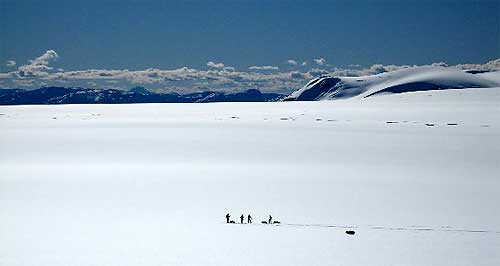
East-west crossing of the Hielo Patagonico Sur © Planetmountain.com
In 1976, during a tourist trip to Bhutan, he fell ill. Back in England, he was diagnosed with cancer. He died on 28 March 1977, aged 70.
From this busy life, we will remember a phrase that is close to our hearts at Secret-Planet: "It is not the approach that counts, but the attitude of the mind".
Text by Didier Mille.
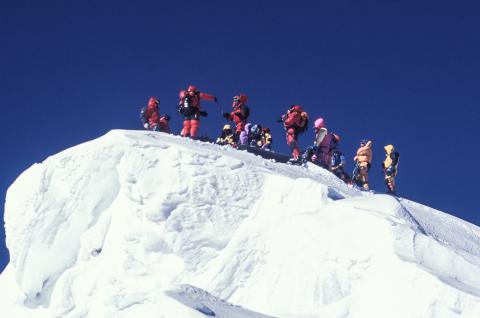
Climb mount Everest at 8849 meters North Tibet side
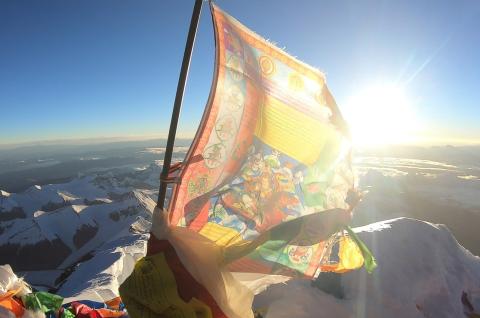

 Expeditions Unlimited blog
Expeditions Unlimited blog